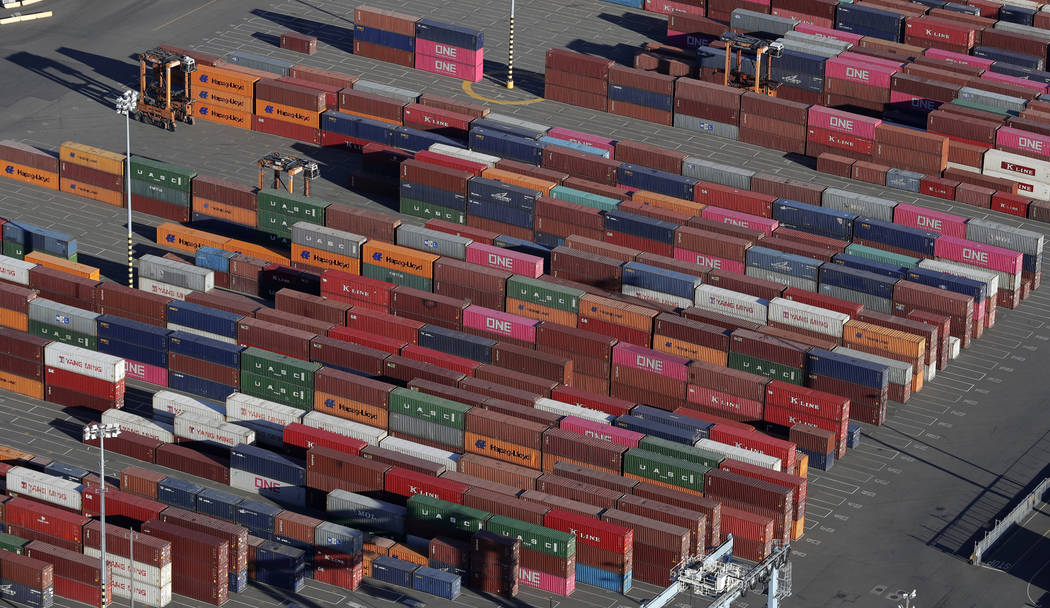Businesses struggle to preserve profits in world of tariffs

NEW YORK — Faced with the Trump administration’s 25% tariff on imports from China, Ruth Rau is looking to other countries to manufacture baby and toddler toys.
“No one domestically can produce the quality we want, and with the cost of shipping and the proposed new regulations, it’s not going to be cost-effective to produce them in China either,” says Rau, owner of Mouse Loves Pig.
The 25% tariffs President Donald Trump has imposed on thousands of Chinese-made products have small business owners trying to determine how or whether they can limit the damage to profits from import duties. Many owners will see if they can pass on the added expense to customers. Some, like Rau, are considering getting products manufactured in countries where the U.S. isn’t waging a trade war, but that’s an expensive alternative that takes time to work out. Others want to find U.S. suppliers, but depending on the product it may be impossible or not much of a money-saver.
Trump raised the tariffs to 25% from a previously imposed 10% last Friday after China refused to meet U.S. demands; trade talks between the countries broke up soon after.
Rau wants to shift production from Nicaragua but manufacturers have told her the prices she’d pay them could go up 30%. Rau, who lives in Winchester, Virginia, is looking at factories elsewhere in Central America as well as South America, hoping they’ll be able to produce toys in time for the holiday season.
Companies of all sizes contend with the Trump tariffs, which are a U.S. tax on goods, and with retaliatory tariffs on U.S. exports that countries impose. Small businesses have a tougher time because they lack the revenue streams larger companies use to absorb costs. Big players also have more negotiating power to get better prices from manufacturers, blunting the tariffs’ effect. If they’re already multinational companies, they can shift manufacturing from one country to another with relative ease.
Peter Horwitz expected the higher tariffs. Horwitz had already absorbed a 10% tariff on the paper and plastic products his company, Tiger Packaging, imports from China. He has already taken steps toward moving some manufacturing to countries including Taiwan and Malaysia.
Complicated decisions
It’s not just added costs that worry Horwitz; fallout from higher tariffs drain his time and focus. Besides having to negotiate deals with new manufacturers, he must reassure customers who don’t want to pay more for his products.
“Suddenly, those customers are questioning whether to give you the business,” says Horwitz, whose company is located in Boca Raton, Florida.
Moving manufacturing can cost a small business tens or hundreds of thousands of dollars, an enormous amount for many firms.
“It’s a complicated decision, whether the cost of new supplies is going to be lower than just enduring the tariffs. There’s no simple answer,” says Peter Cohan, who teaches entrepreneurship at Babson College.
Alder Riley may have to reduce staffers’ hours and scale back plans to expand his 3D manufacturing company, ideastostuff. In 3D printing, machines driven by computers use ultra-thin strands of plastic or metal called filament to create objects; the filament is imported from China. The timing couldn’t be worse for Riley, who recently opened a shop in San Francisco to complement his online business.
“We’re a relatively new concept, and we’re trying to make it as affordable as possible. We’re going to have to eat the cost (of tariffs) as much as possible,” Riley says. He would like to find U.S. sources, but those companies also buy from China.
Switch to Taiwan
Clifton Broumand may have to raise prices on his computer keyboards and mice manufactured in China. His company, Man & Machine, will shift production to Taiwan to avoid the extra tariff.
But Broumand, whose company is based in Landover, Maryland, can’t unilaterally charge more — he needs to see what his competitors are doing. If he raises prices and they don’t, he could lose business to them.
“If everyone is eating this, then there’ll be a price increase,” Broumand says. “It’s going to hit bottom line profits for everyone.”
That is a bad omen for some companies. Some may not be able to absorb 25% tariffs and other costs that keep going up.
“As the pressure builds, you’re going to have small firms scale back, lay off workers or go out of business,” says Lee Branstetter, an economics professor at Carnegie Mellon University’s Heinz College.
In some ways, tariffs are like product shortages and severe weather small businesses can suddenly contend with. As Phillip Kim, an entrepreneurship professor at Babson, puts it, “they’re one of the unexpected things that might happen in the course of doing business that owners can’t predict.”
Consumers pay
Owners should set aside money for such contingencies, Kim says. Moreover, he says, they should try to lessen the chances of being surprised.
“Given the age in which we live, it will be much more important for small business owners and entrepreneurs to be mindful of the broader geopolitical environment in which they operate,” he says.
While the administration contends the tariffs will help U.S. manufacturers, buying domestically isn’t necessarily an antidote. Todd Miller’s metal roofing company purchases steel and aluminum from U.S. producers, but they’ve also raised prices, reasoning they could charge more and still be competitive with tariff-burdened imports.
Miller, president of Piqua, Ohio-based Isaiah Industries, also hasn’t escaped the tariffs on Chinese goods. He imports the waterproofing materials commonly known as tar paper and used under the metal roofing from China. Homeowners have already been seeing the higher costs on their roofing bills from the 10% tariffs, and they can expect to see the latest increase.
“Ultimately, the consumer pays for it,” Miller says.